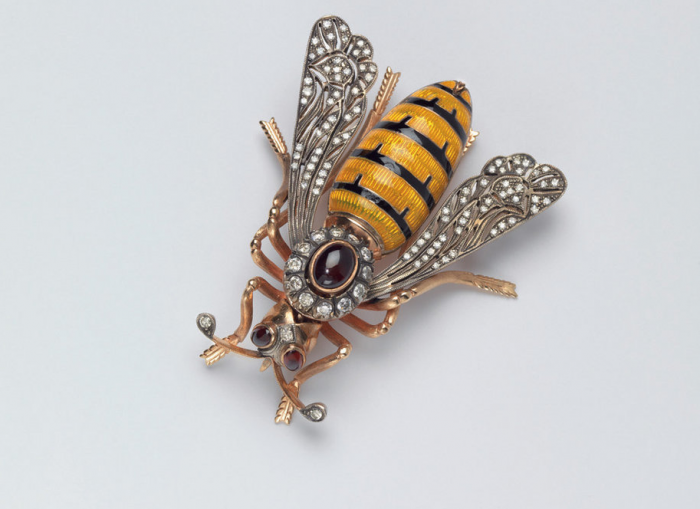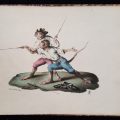The dazzling diplomacy of Madeleine Albright
The first female Secretary of State—and the highest ranking woman in the history of the U.S. government at the time—used humor and the traditional accoutrements of femininity to practice her own kind of diplomacy.
On January 22, 1997, Madeleine Jana Korbel Albright (born Marie Jana Korbelová; May 15, 1937) was sworn in as the 64th and first female U.S. Secretary of State and became the highest- ranking woman in the history of the United States government at the time. She served from 1997 to 2001 under President Bill Clinton. She had previously served as U.S. Ambassador to the United Nations under the Clinton administration.
During her tenure, Albright considerably influenced American foreign policy in Bosnia and Herzegovina and the Middle East. As Secretary of State she represented the U.S. at the transfer of sovereignty over Hong Kong on July 1, 1997. In 2000, Albright became one of the highest-level Western diplomats ever to meet Kim Jong-il, the then-leader of communist North Korea, during an official state visit to that country.

Madeleine Albright, wearing the pin ‘Peace Dove’ by Cecile et Jeanne.
TIMOTHY GREENFIELD SANDERS.

Peace Dove, Cecile et Jeanne (France), c. 1997 – This dove pin was given to Albright by Leah Rabin, wife of Israeli Prime Minister Yitzhak Rabin, who was assassinated in 1995. She wore the pin whenever she gave a speech related to the Middle East.
Over the course of her diplomatic career, Albright became well known for her use of pieces from her personal jewelry collection to convey subtle (and not so subtle) comments and opinions. After the publication of her book, Read My Pins: Stories from a Diplomat’s Jewel Box in 2009, the Smithsonian presented a selection of Albright’s jewelry in the exhibition Read my Pins: The Madeleine Albright Collection. Albright shared some of the stories behind her bijoux with Megan Gambino of Smithsonian magazine.
When did you first use jewelry as a diplomatic accessory?
It all began when I was at the United Nations. It was right after the Gulf War and the United States was pressing for resolutions sanctioning Iraq. During that time I had something dreadful to say about Saddam Hussein on a daily basis, which he deserved because he had invaded Kuwait. The government-controlled Iraqi media then compared me to an “unparalleled serpent.” I happened to have a snake pin, and wore it to my next meeting on Iraq. When the press asked me about it, I thought, “Well, this is fun.” I was the only woman on the Security Council, and I decided to get some more costume jewelry. On good days, I wore flowers and butterflies and balloons, and on bad days, all kinds of bugs and carnivorous animals. I saw it as an additional way of expressing what I was saying, a visual way to deliver a message.

Serpent, Designer Unknown (USA), c. 1860 – For former Secretary of State Madeleine Albright, using pins as a tool of diplomacy started in 1994, when she was the U.S. ambassador to the United Nations. Then-President Saddam Hussein of Iraq called her a serpent. When meeting with Iraqi officials later that year, she wore this antique snake pin as a way to send a message.
What other messages did you deliver?
I had an arrow pin that looked like a missile, and when we were negotiating the Anti-Ballistic Missile Treaty with the Russians, the Russian foreign minister asked, “Is that one of your missile interceptors you’re wearing?” And I responded, “Yes. We make them very small. Let’s negotiate.” Or, after we found that the Russians had planted a listening device—a “bug”—into a conference room near my office in the State Department, the next time I saw the Russians, I wore this huge bug. They got the message.

Bug, Iradj Moini (USA), 1997 – In 1999, it came to light that the Russians had bugged the U.S. State Department. The next time Albright met with the Russians, she pinned this giant bug to her left shoulder.

Red Balloon, Swarovski (Austria), 1992; Green Balloon, Swarovski (Austria), 1992 – Butterflies, flowers or balloons like these symbolized that all was well, or that she was hopeful a meeting would go smoothly.

Bee, Designer Unknown (USA), c. 1980 – Albright often wore pins to reflect her mood. Wasps were worn on days that she “wanted to do a little stinging and deliver a tough message.”

Madeleine Albright wearing her bee pin during a meeting with PLO leader Yassar Arafat.
You were often humorous and playful in your pin choices.
In order to get through a lot of complicated issues, it helps to have a little bit of humor. We were in talks with Syria and Israeli, which was very complicated, and the reporters wanted to know what was going on. I said to them, “sometimes talks, like mushrooms, do better in the dark for a little while.” So then, whenever someone from the press asked what was going on, I would just say, “mushrooms, mushrooms.” Then, I found a mushroom pin. And I was just able to point to the pin.

Black and White Turtle, Lea Stein (France), 1990; Small Purple, Black and Gold Turtle, Isabel Canovas (France), c. 1980; Black and Brown Rhinestone Turtles, Designer Unknown (USA), 1997; Blue Rhinestone Turtle, Designer Unknown (USA), c. 1998; Red Turtle, Designer Unknown (USA), c. 1997 – Turtle pins were used to signify the slow progress of the Middle East peace process.
I know that your pins range from antiques to dime-store baubles. If you had to pick a favorite, which would it be, and why?
My favorite is truly something that doesn’t fit into either of those categories. It is a heart that my daughter made for me that I will always wear on Valentine’s Day (except this Valentine’s, because it is in the museum). I wear it, and people ask me where I got it. I say, well, my daughter made it. They always ask, “How old is your daughter?” Until my daughter finally said, “Mom, you have got to tell people that I made it when I was five years old.” This Valentine’s Day, my granddaughter made me a pin of two, little hearts because she knew that her mother’s heart was in the exhibit. “This is a replacement heart,” she said.

Secretary of State Diamond Eagle, Designer Unknown (France), c. 1890 – This pin almost caused some embarrassment for Albright. She wore it to her swearing-in ceremony as secretary of state. Because it had a complicated clasp, she failed to fasten it properly and, during the ceremony, she looked down to see it dangling from her shoulder. Said Albright, “I was afraid it would fall on the Bible.”
A lot of my pins are truly very simple costume jewelry. I buy them in souvenir shops. People do give them to me. It’s a very eclectic collection. The reason that I think my pin book, Read My Pins, and the whole concept have been popular is that everybody can do this. I have some beautiful pins, but mostly they are things that I picked up for nothing. In fact, for my 65th birthday, someone who works with me went out and bought 65 pins, each cost less than five dollars.
Did a pin ever land you in hot water?
Definitely. When I went to Russia with President Bill Clinton for a summit, I wore a pin with the hear-no-evil, see-no-evil, speak-no evil monkeys, because the Russians never would talk about what was really going on during their conflict with Chechnya. President Vladimir Putin asked why I was wearing those monkeys. I said, because of your Chechnya policy. He was not amused. I probably went too far.

Hear No Evil, Speak No Evil, See No Evil, Iradj Moini (USA), 2000 – Albright first wore this pin in Moscow, for a meeting with then-President Vladimir Putin. The message was about Chechnya, where she felt the Russians were ignoring the human rights violations they had committed.
This is an edited version of content originally published by Smithsonian.com. Copyright 2010 Smithsonian Institution. Reprinted with permission from Smithsonian Enterprises. All rights reserved. Reproduction in any medium is strictly prohibited without permission from Smithsonian Institution.
Posted: 22 January 2020
- Categories:







